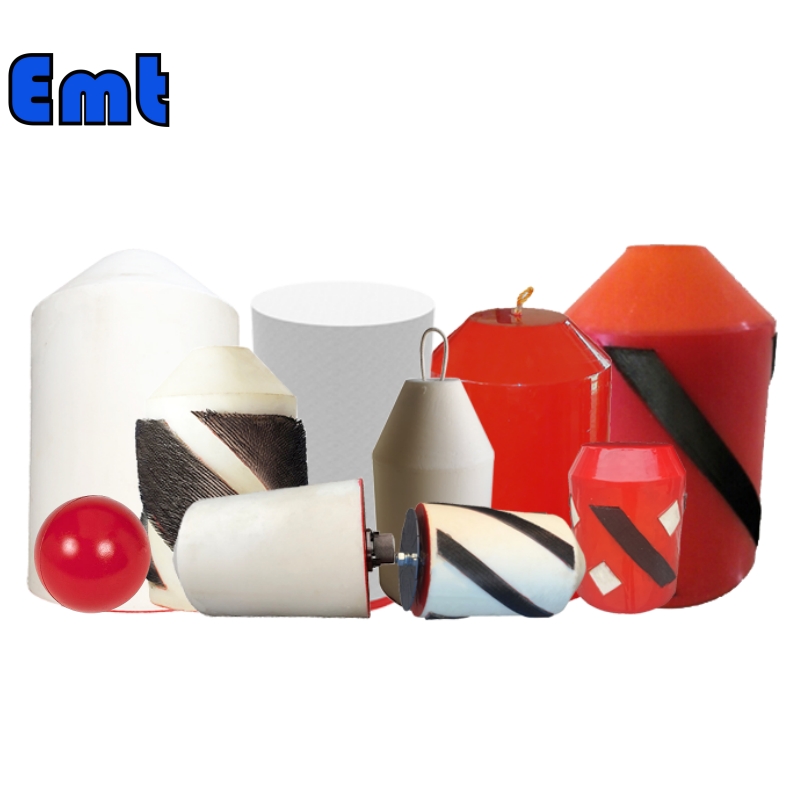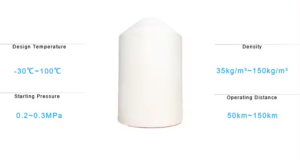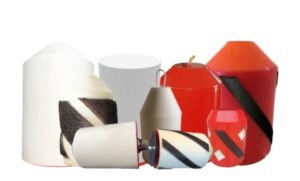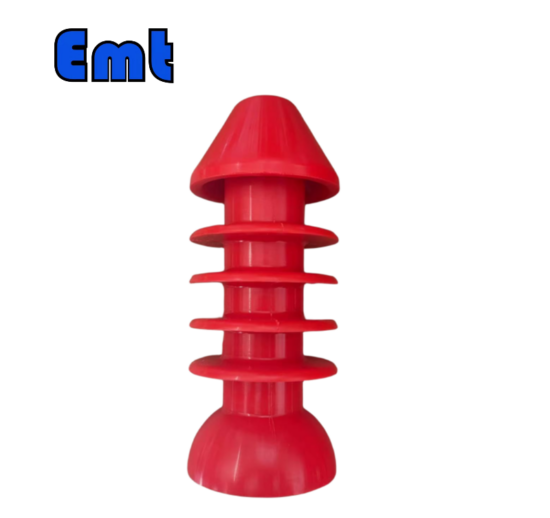مقدمة
Pipeline pigging plays a crucial role in maintaining the efficiency and safety of the gas industry. These devices, known as pigs, travel through pipelines to perform various maintenance tasks. They clean, inspect, and report on the condition of the pipe interior. Regular use of pipeline pigs helps prevent blockages and corrosion, which can lead to leaks or bursts if left unchecked. By ensuring consistent maintenance and inspection, industry professionals can significantly extend the lifespan of pipelines and minimize operational disruptions. This essential practice not only safeguards the infrastructure but also enhances overall system reliability. In this essay, Pig In Gas Pipeline will be introduced.
Understanding Pipeline Pigs
What is a Pipeline Pig?
A pipeline pig is a tool that travels through the interior of a pipeline to perform various maintenance tasks, such as cleaning, inspecting, and sealing. Essentially, it ensures that the pipeline operates efficiently by preventing and identifying obstructions and wear. Initially, the term “pig” arose from the squealing sound the early devices made as they moved through the pipes. These first pigs were simple, primarily used for cleaning, and made from materials such as straw wrapped in wire.
As the industry’s needs evolved, so did the technology of pipeline pigs. Today, they come in sophisticated designs equipped with sensors, cameras, and other diagnostic tools to provide real-time data about the pipeline’s condition. This evolution allows for proactive maintenance strategies, significantly enhancing pipeline safety and efficiency. Modern pigs can detect minute changes in thickness, cracks, and other potential issues long before they become severe problems.
Moreover, the development of “smart pigs” has revolutionized pipeline inspections. These advanced tools use magnetic flux leakage and ultrasonic technology to inspect the walls of pipelines thoroughly. This continuous advancement underscores the critical role that pigging plays in the maintenance and safety of pipelines worldwide.
Different Kinds of Foam Pigs
| اسم | نموذج | اداء | المعايير الفنية |
خنزير رغوة استرطابي | LCQZ-RTH | 1. يتم تشكيلها عن طريق رغوة لمرة واحدة من مادة البولي يوريثين. | ضغط البداية: 0.2-0.3 ميجا باسكال |
| 2. نسيج ناعم ، ومرونة جيدة. | الكثافة: 35 كجم / متر مكعب ~ 150 كجم / متر مكعب | ||
| 3. لديها أداء قوي لامتصاص الماء. ويمكن أن تصل كمية التشوه إلى 70٪. | تحمل الضغط: 7 ميجا باسكال | ||
| 4. تأثير ملحوظ على نزح المياه وإزالة الشحوم وتجفيف خطوط الأنابيب. | معدل التمدد: 320٪ | ||
| نسبة الضغط: 60 | |||
| الحياة المرنة: 50000 مرة | |||
| معدل الاستنزاف: 4 مم / 100 كم | |||
| مسافة التشغيل: 50 كم ~ 150 كم | |||
| درجة حرارة التشغيل: -30 °C ~ 100 °C | |||
خنزير رغوة عارية | LCQZ-RTN | 1. نسيج ناعم ومرونة جيدة. | الضغط الابتدائي: 0.02 ميجا باسكال |
| 2. مع امتصاص الماء القوي ، يمكن أن تصل كمية التشوه إلى 60٪. | الكثافة: 35 كجم / متر مكعب ~ 220 كجم / متر مكعب | ||
| 3. تستخدم لنزح المياه والتنظيف وتجفيف خطوط الأنابيب. | تحمل الضغط: 7 ميجا باسكال | ||
| معدل التمدد: 320٪ | |||
| نسبة الضغط: 60 | |||
| الحياة المرنة: 50000 مرة | |||
| معدل الاستنزاف: 4 مم / 100 كم | |||
| مسافة التشغيل: 50 كم ~ 150 كم | |||
| درجة حرارة التشغيل: -30 °C ~ 100 °C | |||
بولي رغوة خنزير | LCQZ-RTR | 1. الجزء الداخلي منه رغوي بمادة البولي يوريثين. السطح مطلي بطبقة من المطاط الصناعي من مادة البولي يوريثين. | الضغط الابتدائي: 0.02 ميجا باسكال |
| 2. مرونة جيدة ومقاومة تآكل معينة. | الكثافة: 35 كجم / متر مكعب ~ 220 كجم / متر مكعب | ||
| 3. يمكن أن تصل كمية التشوه إلى 50٪. وهو الخنزير الرغوي الأكثر استخداما. | تحمل الضغط: 7 ميجا باسكال | ||
| 4. تستخدم لتنقية الأنابيب وإزالة الترسبات وعزل السوائل. | معدل التمدد: 320٪ | ||
| نسبة الضغط: 50 | |||
| الحياة المرنة: 50000 مرة | |||
| معدل الاستنزاف: 2 مم / 100 كم | |||
| مسافة التشغيل: 100 كم ~ 300 كم | |||
كريسكروس رغوة خنزير | LCQZ-RTCC | 1. الداخل رغوي بمادة البولي يوريثين. السطح مغطى بمطاط من مادة البولي يوريثين المنشورية. | درجة حرارة التشغيل: -30 °C ~ 100 °C |
| 2. صلابة سطح عالية ومعامل احتكاك كبير. | |||
| 3. لديه مرونة عالية وصلابة. | |||
| 4. تستخدم لتنظيف خطوط الأنابيب والتنظيف وتنظيف الشوائب. | |||
Crisscross رغوة الخنزير مع فرشاة | LCQZ-RTCB | 1. The interior is foamed by polyurethane material. The surface is coated with an elastomer coating. | الضغط الابتدائي: 0.02 ميجا باسكال |
| 2. Paste the spiral wire brush. | الكثافة: 35 كجم / متر مكعب ~ 220 كجم / متر مكعب | ||
| 3. يمكن أن تصل كمية التشوه إلى 40٪. وهو مرن ولن يسقط. | تحمل الضغط: 7 ميجا باسكال | ||
| 4. يتم استخدامه لإزالة المقياس الصلب لخط الأنابيب وله تأثيرات أفضل لإزالة الصدأ وإزالة التلوث. | معدل التمدد: 320٪ | ||
| نسبة الضغط: 50 | |||
| الحياة المرنة: 50000 مرة | |||
| معدل الاستنزاف: 2 مم / 100 كم | |||
| مسافة التشغيل: 100 كم ~ 300 كم | |||
| درجة حرارة التشغيل: -30 °C ~ 100 °C |
Purposes and Benefits of Pigging
Cleaning and Maintenance
Pipeline pigging significantly enhances the operational efficiency and safety of pipeline systems. By removing deposits and reducing corrosion risk, pigging helps maintain the integrity of pipelines. This process involves sending a pig through the pipeline, which scrubs away build-up and debris that can cause blockages or accelerate corrosion. As a result, regular cleaning not only keeps the flow smooth but also prevents the deterioration that can lead to leaks or bursts.
Extending the lifespan of pipelines is another crucial benefit of consistent pigging. By mitigating corrosion and removing harmful deposits, pigging ensures that pipelines can operate longer without the need for expensive repairs or replacements. This proactive maintenance strategy saves companies significant amounts of money over time and helps avoid environmental disasters caused by pipeline failures.
Inspection and Monitoring
In terms of inspection and monitoring, pigging plays a pivotal role. Modern inspection pigs, equipped with advanced sensors, travel through pipelines to detect anomalies and potential failures. These smart pigs can identify issues like cracks, fractures, and thinning walls before they escalate into major problems. This capability allows companies to address minor issues swiftly, preventing costly and hazardous failures.
Compliance with safety regulations is another area where pigging proves essential. Regulatory bodies often require periodic inspections and maintenance to ensure pipeline safety. Pigging helps companies meet these regulations by providing thorough internal assessments and verifiable data on pipeline health. This compliance not only avoids legal penalties but also reinforces public and environmental safety.
Operational Efficiency
On the operational efficiency front, pigging significantly improves product throughput and quality. By maintaining a clean and unobstructed flow, pigging ensures that gas or oil travels efficiently through pipelines. This optimization reduces the energy required to pump fluids and gases, enhancing overall system performance. Moreover, a clean pipeline means that the product remains uncontaminated, maintaining quality from start to finish.
Lastly, reducing downtime and operational costs is another substantial benefit of pigging. By preventing issues that can lead to shutdowns or extensive maintenance, pigging keeps pipelines operational more consistently. This continuous operation prevents the financial losses associated with downtime and reduces the labor and materials needed for emergency repairs. Companies can thus allocate resources more effectively, investing in improvements rather than dealing with crises.
Overall, the practice of pigging in pipelines crucially supports the maintenance, safety, and efficiency of these vital systems. It not only ensures the smooth operation of pipelines but also helps companies meet industry standards and safety regulations, ultimately protecting the environment and public health.
خاتمة
In conclusion, the practice of pigging is indispensable for maintaining and enhancing pipeline integrity. It ensures that pipelines operate efficiently, remain safe, and meet regulatory standards. As technology evolves, integrating advanced pigging solutions becomes crucial. Companies must embrace these innovations to stay ahead in managing their pipeline systems effectively. By continually adapting to new technologies in pigging, industries can not only safeguard their assets but also optimize their operations, paving the way for a safer and more efficient future. This commitment will serve as a cornerstone in the ongoing pursuit of excellence in pipeline management.









لا توجد مراجعات بعد.